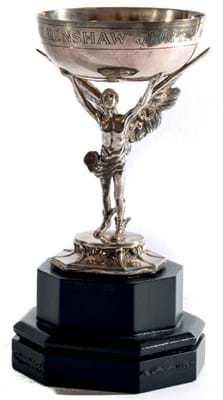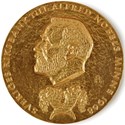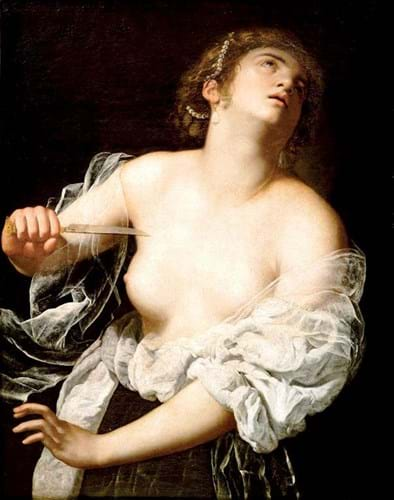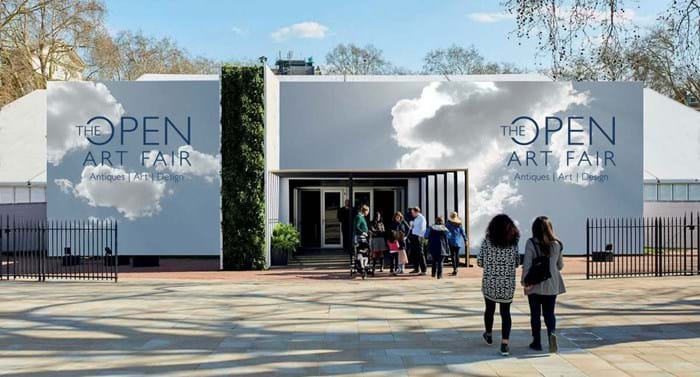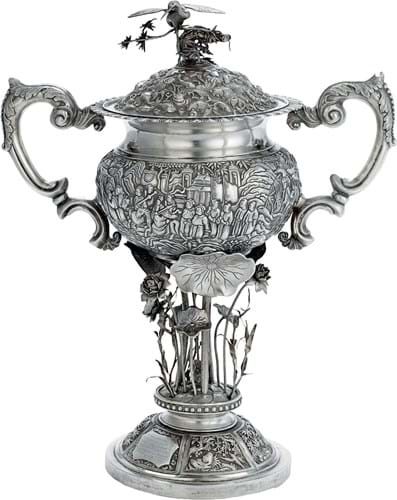
Brexit uncertainty over
Following the Conservative Party winning a majority in the General Election on December 13, the UK is expected to end its EU membership on January 31.
The UK government will then have until the end of the transition period on December 31 to negotiate a free-trade agreement with Brussels.
The end to some of the Brexit uncertainty will help the art and antiques trade.
Pent-up consignments from previously reticent vendors could now be released possibly leading to a bonanza for auction houses in 2020.
Foreign dealers previously unwilling to exhibit at UK fairs may feel more willing to commit to new schedules in 2020 now that the fear of a no-deal Brexit has receded.
In the longer term, however, the trade will face significant complications as a result of inevitable changes to import and export rules.
Timed auctions on the up
The ‘online-only’ or ‘timed online’ auction is not exactly a new way of selling art and antiques. Ebay, founded by Pierre Omidyar in the autumn of 1995, turns 25 years old in 2020. However, the perception of the timed sale as the place for low-value collectables or unsold lots from ‘live’ sales is finally changing. The year just ending was something of a breakthrough for this selling model in the UK. Expect more of the same over the coming 12 months.
Results from 2019 for Sotheby’s, Christie’s and Bonhams tell a story: timed sales may represent only a small percentage of total business but they are now the firms’ biggest source of new customers. Accessible sales of collectable trainers, Supreme merch, wristwatches, ‘celebrity’ collections are all part of the quest to broaden the target audience.
No wonder Bonhams intends to double the number of its online-only sales in 2020.
Average online lot values and selling rates are rising and the horizon of what sells online is broadening. Books, prints, jewellery, Asian art and secondary Old Masters are now the norm. In 2019 Christie’s sold the Posner collection of Chinese and Japanese export silver in an online sale in the supposedly sleepy month of August; Texas auction house Heritage converted monthly interiors sales into online-only auctions in July and had sold more than $1m in hammer total by November.
The key to timed-sale success has turned out to be a healthy respect for the oldest auction principles. Lots must be market fresh, well photographed, described in detail and with realistic estimates. Some sales benefit from theming by category or represent a single-owner collection. All must be available for examination in person.
While some specialist UK auction houses have made timed-online their exclusive way of selling – witness the success of Comic Book Auctions and its sales on thesaleroom.com, for example – a few of the UK’s biggest regional firms have also made online-only sales a core part of their business model.
Fellows intends to raise the number of its online-only sales in 2020 by at least a quarter, holding 25 or more next year. Stephen Whittaker, managing director at Fellows, said: “All of the sales have had a very high sell-rate and they have been popular among our buyers, so I’m sure this is a trend which will continue in 2020.”
Stephan Ludwig, Forum Auctions’ chief executive officer, affirms that the key to a successful timed auction is “no different to that of a traditional auction, namely presenting the correct combination of interesting material, competitive pricing and ensuring the lots are easily accessible to a broader ecommerce-savvy community of buyers.
“We treat the lots offered in our timed auction format no differently to those offered in our catalogued sales. We have found that our timed auction format is presently our most effective new buyer recruitment tool for younger shoppers.”
He expects that the hammer total from timed auctions at Forum in 2020 will represent more than 25% or more of overall hammer, a rise of 8 percentage points year-on-year.
Other major UK regional auction houses are set to embrace timed sales in the year ahead. The future is increasingly online.
Red tape challenge
The European Union’s Fifth Anti-Money Laundering Directive is to come into effect in the UK on January 10, 2020 (see page 4).
It inserts extra layers of administration in the purchasing of art and antiques at values of €10,000 or more. As the trade adjusts to the new regulation there will be concerns about how it will impact day-to-day processes.
On the one side is the administrative burden. Companies must ensure they meet the requirements in the course of the new year, including putting in place an AML policy and risk assessment, establishing a record-keeping system, appointing an AML reporting officer and a deputy, training staff and keeping a record of who is trained.
On the other will be the challenge of finding the most expedient way to conclude a face-to-face sale. A dealer may have worked hard to turn a casual visitor into a prospective buyer only to then ask the new customer for ID and to go through a series of intrusive questions. The excitement and simplicity of buying and selling fine art at retail may never be the same again – but dealers invariably find a way to rise to such challenges.
Ivory ban looms larger
The Ivory Act 2018 was given Royal Assent in December of that year but is yet to come into force. The act is on hold until at least the spring following steps by a group of dealers and collectors, known as FACT (the Friends of Antique and Cultural Treasures Limited), who sought a judicial review of the act in 2019. They lost their High Court battle in October but were later granted an appeal which is expected to be heard in the spring.
The Department for Environment, Food and Rural Affairs (DEFRA) is committed to introducing the law in 2020 which introduces a near-total ban on the trade in objects containing ivory with a small number of exemptions.
DEFRA has requested the appeal to be heard before the end of March 2020 to minimise further delay before the act is brought into force and FACT has agreed to this timing.
Richard Pike, a partner at Constantine Cannon, the lawyers acting for FACT, said: “It’s very difficult to get the Court of Appeal to overturn primary legislation… though we might yet go to the Supreme Court. I wouldn’t rule that out.”
If the act does come into force this year dealers and auctioneers in antique ivory – and the authorities – will again face both the difficulty of new regulation and questions of its interpretation.
For a reminder on the Ivory Act’s details and background see our guide.
Antiquities turmoil
The growing politicisation of the antiquities and tribal art trade is set to continue in 2020 with nation states, heritage bodies and now social media users making increasingly loud protests over what they regard as pieces of ‘stolen’ history.
In July 2019, the Egyptian National Committee for Antiquities Repatriation raised a complaint over the £4m auction of a bust of Tutankhamun at Christie’s. This followed a call from Greece in 2018 that a Corinthian Geometric period bronze horse that sold at Sotheby’s be returned.
These factors will affect not just the world’s top salerooms selling the most valuable works but also those further down the price levels. With due diligence becoming ever more important, regional auction houses are increasingly likely to receive legal letters from ministries and embassies about the works they are selling.
The museums world has also come under scrutiny. While in France a report commissioned by President Emmanuel Macron has called for thousands of African artworks in French museums to be repatriated, in the UK it was announced in November that 43 sacred and ceremonial objects in the collection of Manchester Museum would be “unconditionally” restored to four different indigenous Aboriginal groups in Australia. Many of these objects are believed to have arrived in the country over a century ago.
This cultural climate has crossed over into the auction market where the use of social media to express outrage at certain sales has increased. An example is the reaction to a Maori cloak that was due to be offered at Sussex auction house Burstow & Hewett in September. Despite its good provenance, it had to be withdrawn after the firm received online threats and abuse.
An article looking ahead at the changing legal landscape in this sector appears in this issue.
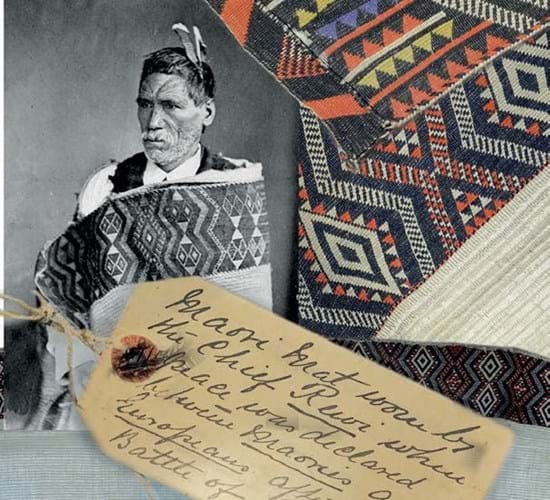
A Maori chief’s cloak offered at an East Sussex auction house was the subject of a social media storm in September 2019 and withdrawn from sale.
Redressing the imbalance
There will be a further push by museums and institutions to seek to redress the imbalance in their collections, including an increase in female, black and minority ethnic artists and historical revisionism. Institutions are seeking to tell the “other side of the story” which has in the past been ignored by curators or the collectors.
In September 2019 a joint survey by artnet News and In Other Words found just 11% of artworks acquired by museums in the US in the past decade were by women (and a similar survey found less than 3% of museum acquisitions had been of works by African American artists in the US).
In the US, Baltimore Museum of Art is among those announcing plans to redress this and has said that in 2020 it will acquire works that were created only by women.
Auction houses, dealers and fairs have already held female-artist-only exhibitions and sales in the past year, including dealer Liss Llewellyn, fair TEFAF New York Spring, event Mayfair Art Weekend and auction houses Sotheby’s and Lyon & Turnbull. This momentum is set to increase.
The National Portrait Gallery has promised to acquire more artworks which depict non-white people and women, as well as objects expressing “social and cultural diversity”. It cited a pottery figure of Tom Molineaux, the African-American bare-knuckle boxer and former slave, c.1815, which it had acquired, as an example.
Female Old Master painter Artemisia Gentileschi (1593-c.1656) reached a new auction record when her Lucretia sold on November 13, 2019 for €4m at Artcurial and the National Gallery plans the first major exhibition of her work in the UK from April 4-July 26, 2020.
The trend of focusing on historically under-represented artists and objects will prompt more research, discoveries, a rise to prominence of previously under-appreciated artists and new auction records. Dealers can take advantage of this development and concentrate on buying pieces that will appeal to institutions’ new criteria.

Works by artist Mary Duncan were offered by dealer Sim Fine Art in October 2019. The pictures show WAACs helping harvest sphagnum moss for First World War field dressings. This scene is titled Gathering the Moss.
New era at BADA
The British Antique Dealers’ Association (BADA) enters 2020 without a permanent president, CEO or a fair under its own brand. It could mean an identity crisis for the association or it could be a chance to reassess and reaffirm its place in the trade.
The past 12 months were tumultuous, marked by external issues (Brexit, the Ivory Act) and internal change. In April, president Victoria Borwick resigned. CEO Marco Forgione announced in November his intention to move on. Meanwhile, there was outcry over the sale of BADA’s annual fair and the way in which it was communicated, culminating in a flurry of letters to ATG and a meeting for members in October.
Now the association faces a challenging year, during which it has committed to help transform the BADA fair into The Open Art Fair (under new ownership), assuaging the doubts of returning dealers. At the same time, it must support its members on ongoing issues such as anti-money laundering regulations and the UK’s departure from the EU.
BADA remains ambitious and has shown its desire to respond. At October’s meeting it committed to better communication.
Members are also keen for change, voting dealer Ashley Gray (who ran on a ‘modernisation’ platform) onto the council.
One of the main priorities this year is BADA’s website. This is slated to be an alternative to dealer aggregator platforms such as 1stDibs and will be the focus of much time and money (some of which derives from the sale of the fair).
Major fairs up the ante
Fair organisers are going big. Many national and international fairs have joined forces or expanded, offering more dealers and more dates in a bid to lure buyers with ‘unmissable’ events.
The importance of bulking up was recognised publicly by MaD Events, new owner of Birmingham’s Art & Antiques for Everyone (AAfE) fair. Its commitment to reviving the thrice-yearly event is tied to enlarging it, offering buyers access to more dealers and a wider variety of stock.
Others have tried to grow outside as well as in, such as the organisers of Firsts: London’s Rare Book Fair.
Last year, it encouraged three other major London book and map fairs to join forces and hold their separate events over the same four days in June.
Following increased footfall at Firsts, the series returns in this format for 2020, ramped up with a new prints fair within the ABA event.
Meanwhile, Art and Antiques Fair Olympia has taken a different tack, expanding the length of its run (June 17-28) to encompass two weekends next summer.
Its spot in the calendar is already a focus for London fairs. After the loss of a couple of significant events (Art Antiques London, Eight Days in June) over the past few years, the number of coinciding events is once again on the rise. As well as Masterpiece and London Art Week, London 2020 will host a new summer staging of Connect – The Independent Art Fair (June 25-28) and the second annual Fair for Saatchi (likely under a different title).
Meanwhile, Masterpiece is slated to continue its partnership with Fine Art Asia, the October fair in Hong Kong, with each hosting a showcase of the others’ exhibitors.
At the top end of the scale, TEFAF (like AAfE) has put the emphasis on dealers, scrapping a restaurant and loan show in its Paper area at Maastricht in order to devote more space to exhibitor stands.
There are also a few new fairs to visit in 2020. One is The Open Art Fair, which essentially takes the place of the BADA fair but opens it up to non-association member dealers. Another is Eye of the Collector, which has its inaugural staging at Two Temple Place, a few minutes’ walk away from Photo London, which runs simultaneously at Somerset House.
Green is the theme
The art and antiques trade is better positioned than almost any other to benefit from the rise in interest among consumers in environmental issues.
It is a great time to be selling well-crafted second-hand items with a tiny carbon foot-print but the next generation of buyers is seeking even more than that. They will be looking at a firm’s own green credentials before deciding whether to buy a green product from it. So dealers, auctioneers, fair organisers and trade associations will be tackling this matter. They need to be able to answer questions such as:
• How green is your business?
• Do you get your electricity from a renewable energy supplier?
• Is your packaging recycled or is it harming the environment?
• Does you use carbon offset for your business travel?
• And, crucially, how are you telling your clients and potential clients about your initiatives in this area?
Already under way at Christie’s, for example, is an ongoing sustainability programme that includes efforts to procure energy from renewable sources, reducing energy use in buildings, assessing travel of staff and artworks, and reviewing the production of materials and recycling to minimise waste.
“As a priority in 2020, we will continue to look at all aspects of our business to identify where we can reduce environmental impact,” says Guillaume Cerutti, the firm’s chief executive officer.
This topic, however, concerns businesses of every size – as evidenced by recent letters to ATG about better options for packaging when transporting art and antiques.
On this week’s Letters page (see page 55), Nigel Worboys, who launched Antiques Are Green more than 10 years ago, provides his view on what the trade needs to be doing in 2020.


